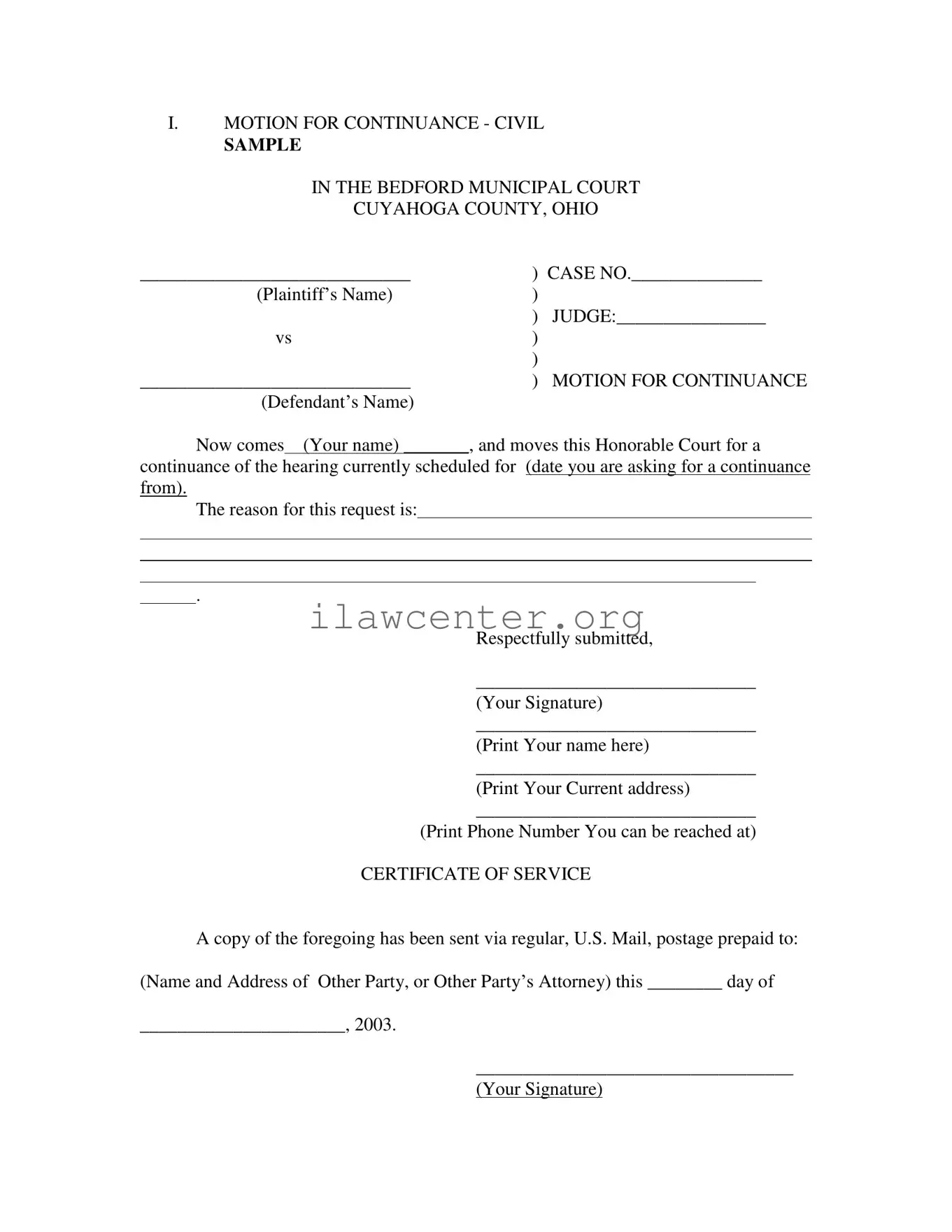Instructions on Utilizing Motion For Continuance
After filling out the Motion For Continuance form, you will file it with the court where your case is being heard. You will also need to send a copy to the other party involved in your case. Make sure you keep a record of everything you submit and send.
- Start by entering the case number at the top of the form, where it states CASE NO..
- Write the plaintiff’s name in the space provided below the case number.
- Fill in the name of the judge in the designated area.
- Next, write the defendant’s name in the space labeled appropriately.
- In the main section, state your name clearly where it mentions Now comes.
- Indicate the date of the hearing for which you are requesting a continuance.
- Provide the reason for your request for a continuance in the space provided.
- Sign your name in the space marked Your Signature.
- Print your name in the area labeled Print Your name here.
- Fill in your current address in the space designated for that purpose.
- Complete the section for your phone number, where it says Print Phone Number You can be reached at.
- In the CERTIFICATE OF SERVICE section, write the name and address of the other party or their attorney.
- Finally, sign and date the CERTIFICATE OF SERVICE at the bottom, noting the date you are sending this information.

